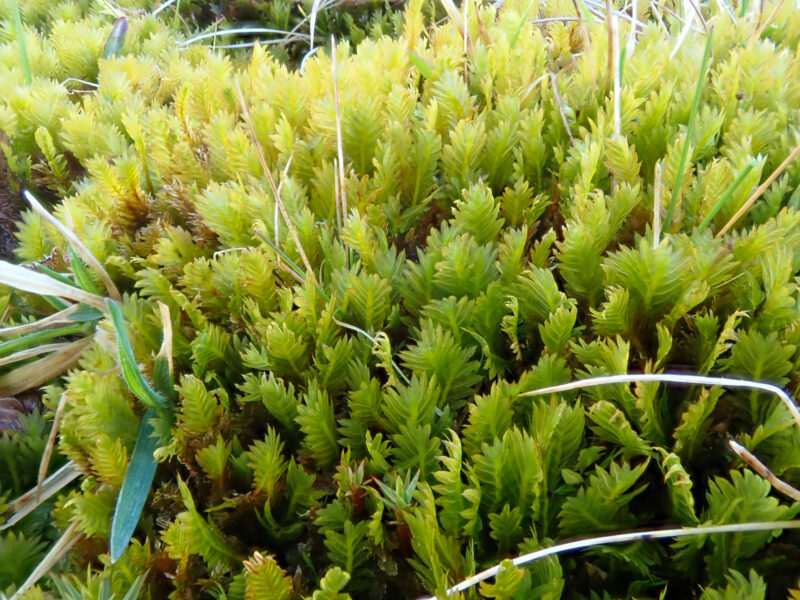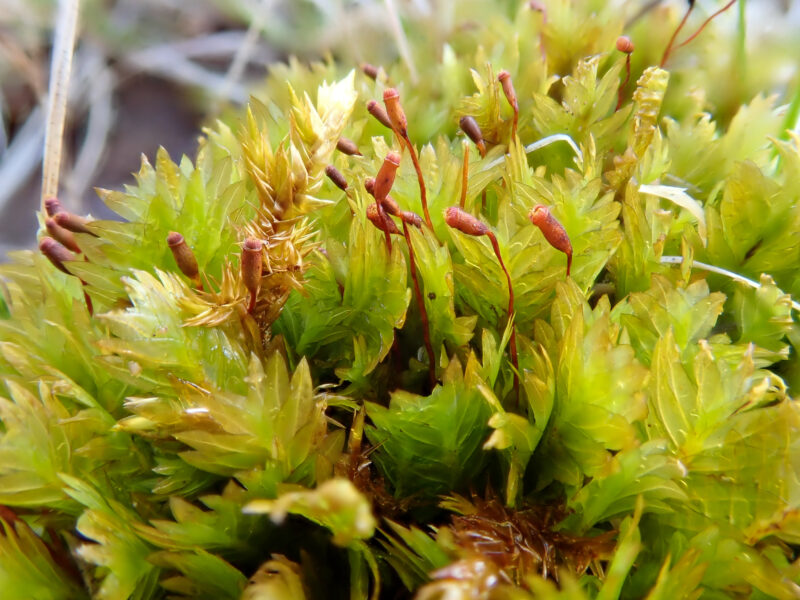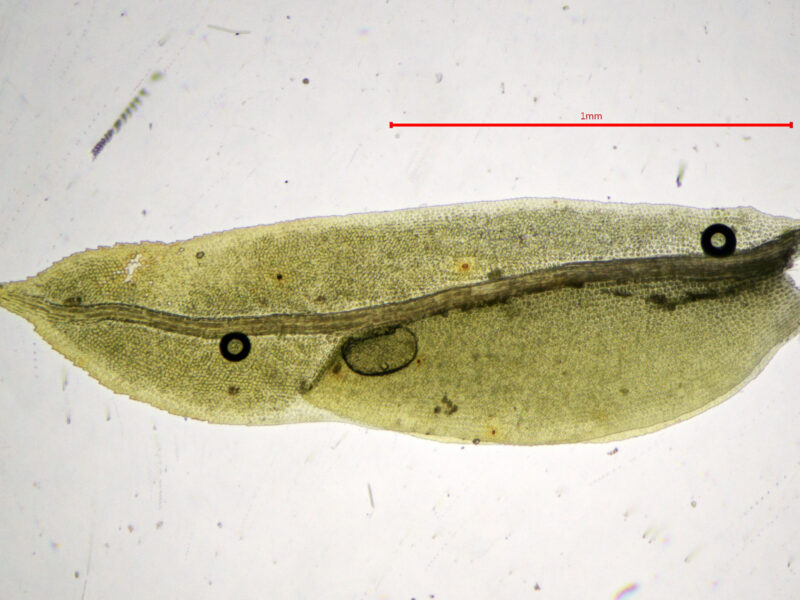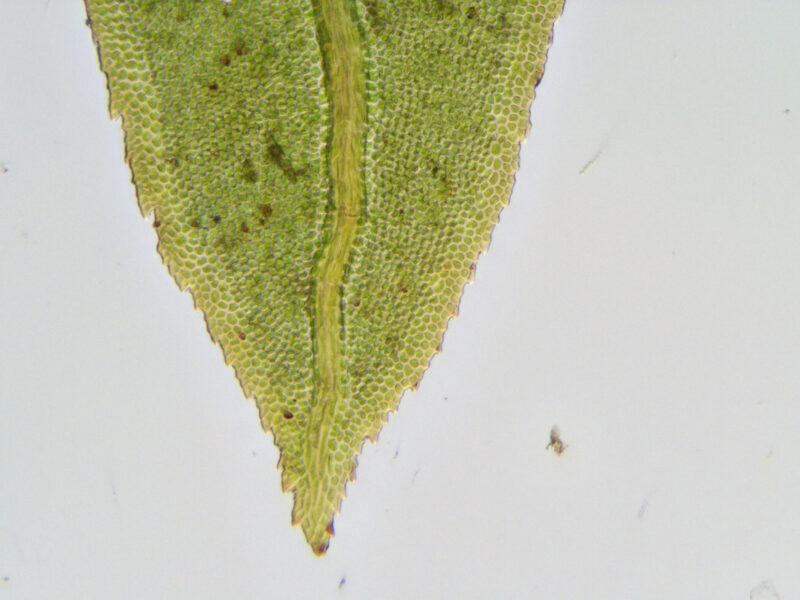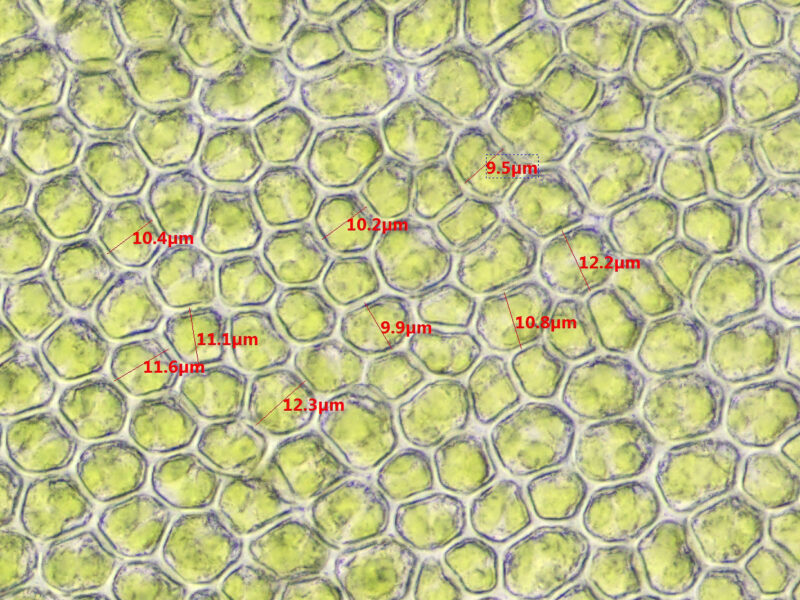Identification notes
This is one of our more robust species, forming tufts several cm tall, and is commonly found in calcareous grassland, especially where moist. A hand lens will show that the nerve ends below the apex, the margin has some coarse teeth, and there is a pale band of margin cells running around the edge of the leaf (not a border of narrow cells). Fissidens taxifolius is also common on the clay-marl soils that are often found in such habitats, but it is generally smaller with a distinctly excurrent nerve and none of the features given above.
The only other common species that it could be confused with is Fissidens adianthoides. This is usually even larger and grows in wetter places but also calcareous grassland. It generally has larger leaf cells and a less conspicuous marginal band of cells, but often it is not possible to separate the two species in the field (and even sometimes under the microscope). Usually Fissidens dubius will be found to have small patches of multistratose cells in the lamina. These appear can be detected by racking the microscope up and down under high power, when the cell walls will be seen to be superimposed.
Read the Field Guide account


